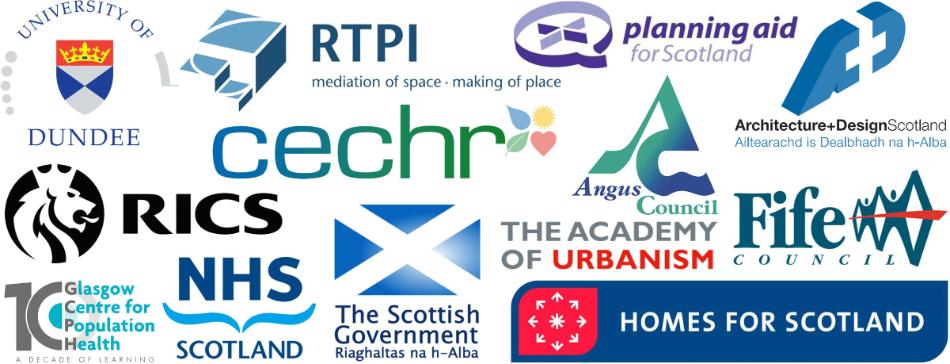Report
Measuring Wellbeing for Effective Placemaking Report
Video
Briefing
Date: 13/11/2015 Time: 10.00 – 16.00
Location: Dalhousie Lecture Theatre (LT1- Ground Floor), University of Dundee
Considerable advances around the meaning of well-being have been made in recent years, with a view to influencing national policies which value quality of life, including linkages with the physical environment and the social health of communities. However, as yet there has been little consideration of how well-being can be achieved through collaborative forms of place making. Critics suggest that place making is often more concerned with the form and physical appearance of the built environment than with wider community needs, that it is not sufficiently resilient to be capable of delivering long-term outcomes, and that the processes of place making and the objectives of well-being are not well aligned. Within the growing body of academic and practitioner research into well-being, there are calls for greater clarity in the way well-being is used and applied in public policy. The existence of different and competing understandings and interpretations of well-being risk creating barriers to communication across different sectors, reducing trust and confidence. The varied meanings have also blurred the lines between what aspects can contribute to wellbeing and how people actually feel in terms of their wellbeing, the value judgements they make. It is therefore timely to seek clarity within this debate, particularly to separate what wellbeing is from those factors that can impact on wellbeing.
Whilst steps have been made towards understanding individual or social wellbeing in terms more than material wealth, there are nonetheless many conflicting ideas and theories about both what constitutes wellbeing and how it should be measured. There is recognition that in order to evaluate the benefits of different policy interventions for enhancing well-being, clear definitions, standardised indicators and assessment tools are essential. These need to be accompanied by examination of the underlying processes employed if the use of standardised indicators and assessment tools are going to lead effectively to quality of place outcomes and well-being.
This symposium will explore how to fill the gap between the theory and practice of measuring well-being for effective place-making. It will consider how to measure the contribution that better place making can make to well-being, both in terms of social capital and quality of life indicators. It will also question whether professional practice needs be transformed to deliver more effective well-being oriented outcomes.
In CECHR, we focus on robust evaluation of current professional practice in spatial design and planning, and on the critical assessment of new ideas and methods. Through these activities, we seek to provide practice, research and learning frameworks for promoting healthier places. CECHR, which lies at the heart of the University’s vision of Transformation - striving for excellence and impact, has explored the practice of place-making through a series of symposia . A framework of principles covering engagement, design, planning and development has emerged.
In this sixth symposium ‘Measuring wellbeing for effective place-making’, we will explore how to measure well-being, including establishing key indicators and developing best practice standards and metrics. Small groups will discuss: What is happening? What needs improving? What do we want to happen? Through a series of activities participants will consider:
- How should we measure well-being? How do we distinguish between identifying what people perceive well-being to be from the factors that actually impact on wellbeing?
- What measures (indicators and related metrics) are appropriate for different contexts/schemes?
- What kinds of approaches are needed for evaluating the contribution of place making to well-being?
- How can the evaluation of wellbeing of collaborative community place-making approaches be better integrated?
This one day event, which was run collaboratively with community and development sector partners, was structured around presentations, small group and plenary discussion. The event brought together expertise from across the UK and abroad.
